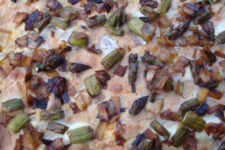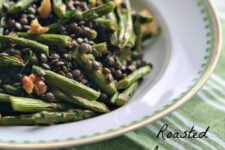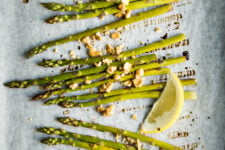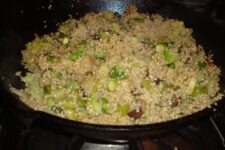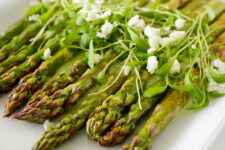Asparagus is a classic, staple spring ingredient. It finds its way into Easter dinners and Mother’s Day brunches as one of the first fresh veggies to arrive, heralding spring, in some parts of the country as early as February.
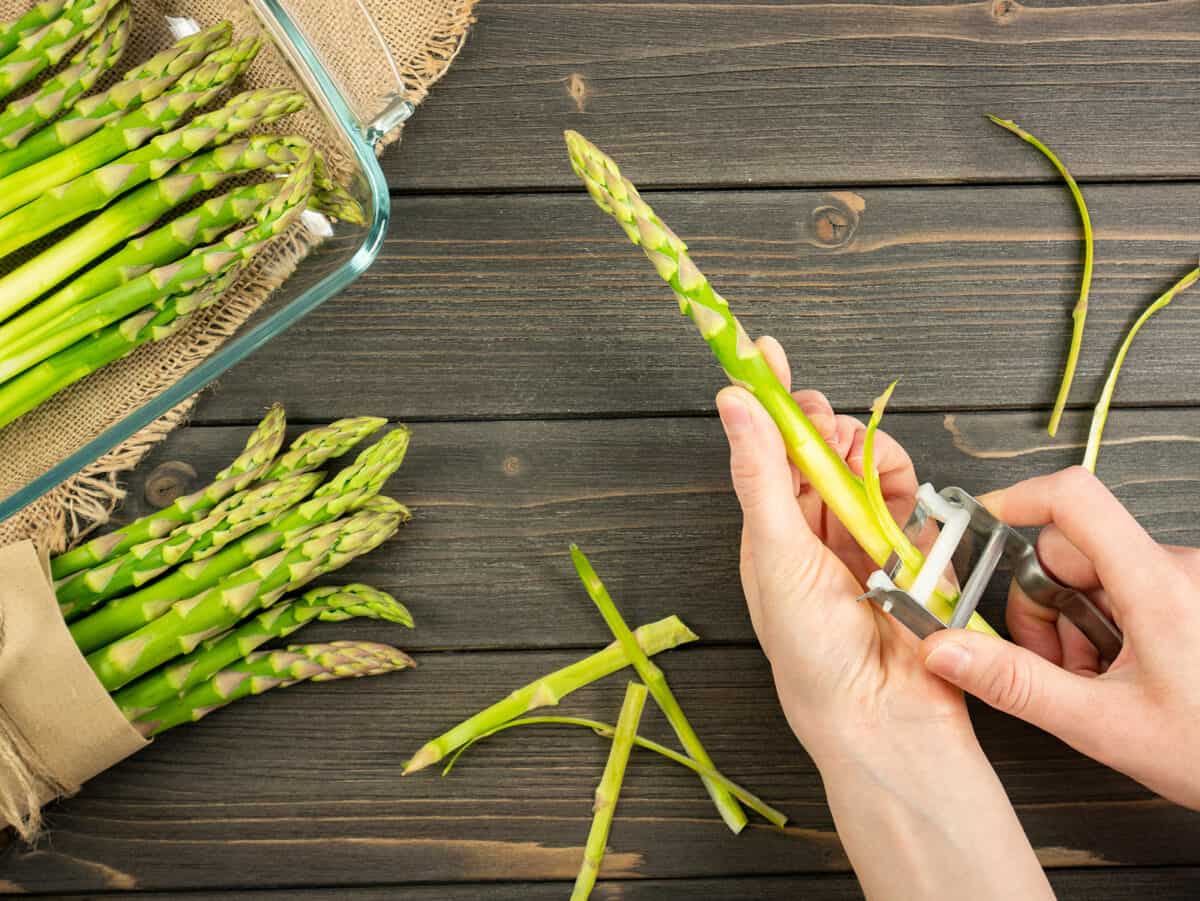
If asparagus is a staple in your household, too, you probably know the drill. Grab your fresh asparagus, snap the woody ends off of one side of each stalk, and then proceed with roasting, sautéing, grilling or otherwise cooking your asparagus however you prefer.
But… what if you’ve been going about it all wrong?
Why You Should Peel — Not Snap — Your Asparagus
Snapping your asparagus is often assumed to be the best, surest way to remove the — for lack of a better word — gross ends. As you snap the asparagus, it naturally breaks where the gross bits give way to the good, tender bits, leaving you with asparagus that’s precisely the right texture, all the way through.
Of course, this process can be time-consuming. It’s a lot of individual stalk snapping. You could try to cut corners by guess-timating where the woody parts end and where the tender parts begin, and then cutting all the stalks at once, but that’s not a foolproof method.
Additionally, you’re losing a lot of asparagus by snapping the stalks, and the rough ends don’t make for picture-perfect, Food Network-worthy dishes.
Enter, peeling your asparagus.

Peeling your asparagus remedies all of the above. You get to keep more asparagus on your plate, without wasting large chunks of your stalk. You get prettier stalks overall. And, it’s really not that annoyingly time-intensive once you get into a groove.
So, cut off the very ends of the asparagus in one go — but just the very ends! — and then start peeling. You’re not going to peel the entire stalk. Instead, you’re just going to peel from about half-way down the stalk and to the end that you cut.
To make your life easier, peel a few stalks at a time by laying them on your work surface, peeling them with a Y-shaped peeler, turning the stalks as you go. The peeling removes the woody texture from the bottom and leaves you with just the tender interior.
It’s really that simple.
Oh, and for all of those peels you have now? Don’t just compost them. Consider using them the next time you make homemade vegetable broth from scratch.

How to Eat Peeled Asparagus
Of course, if you’re going to peel your asparagus, and make it look all pretty, choose an asparagus recipe that’ll really let your hard work shine.
Roast the asparagus with balsamic vinegar and lemon juice, for a stand-alone side dish that’ll wow, or nestle your beautiful asparagus between a poached egg and toast. For an extra-spring-y dish to fit the season, use the asparagus in a salad with green lentils and fresh herbs.

